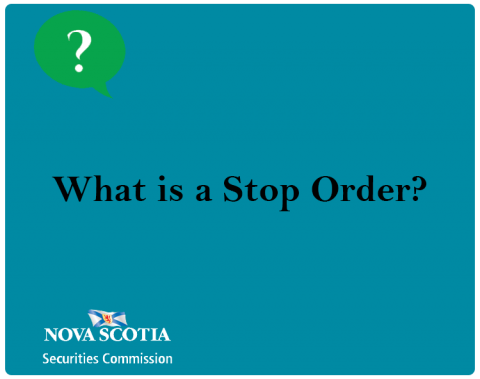Submitted by nsscadmin on

Our review of stock purchasing and selling order types concludes this week with a look at stop orders.
A stop order is an order to buy or sell stock when it moves past a particular price. By placing a stop order the buyer or seller is increasing the chance of hitting a predetermined entry or exit price for their shares. Stop orders are typically set to limit losses and reduce the risk of loss or set a specific level of profits.
The easiest way to understand a stop order is to look at an example. Let’s say I purchase stock in a company at $50 per share. Months later the shares are now trading at $145 per share. To protect myself from any sudden price drops, I can place a stop order to sell at a stop price of $100 per share. If the share price were to fall to $100, my order to sell my shares to lock in my profit may be executed. A stop order is not guaranteed to sell at the exact stop price, due to volatility, but it will be as close as possible.
You can also place stop orders to buy if you think it can get you in on a rising stock. For example, a company is currently trading at $100. I put in a stop purchase order to buy stock at $105 as I think this could be the start of an upswing in value. As soon as the price of the stock moves above $105 my purchase order would execute. Most stop orders also set an upper limit price which is the highest price they are willing to meet. In our example above I could set a limit price for $110. If the order can be filled under $110 (but over $105) it will be filled. If the price goes over $110 the order will not be filled.
Stop orders come with increased risk, so make sure you fully understand what you’re getting into and how your investment works before submitting any stop orders.
